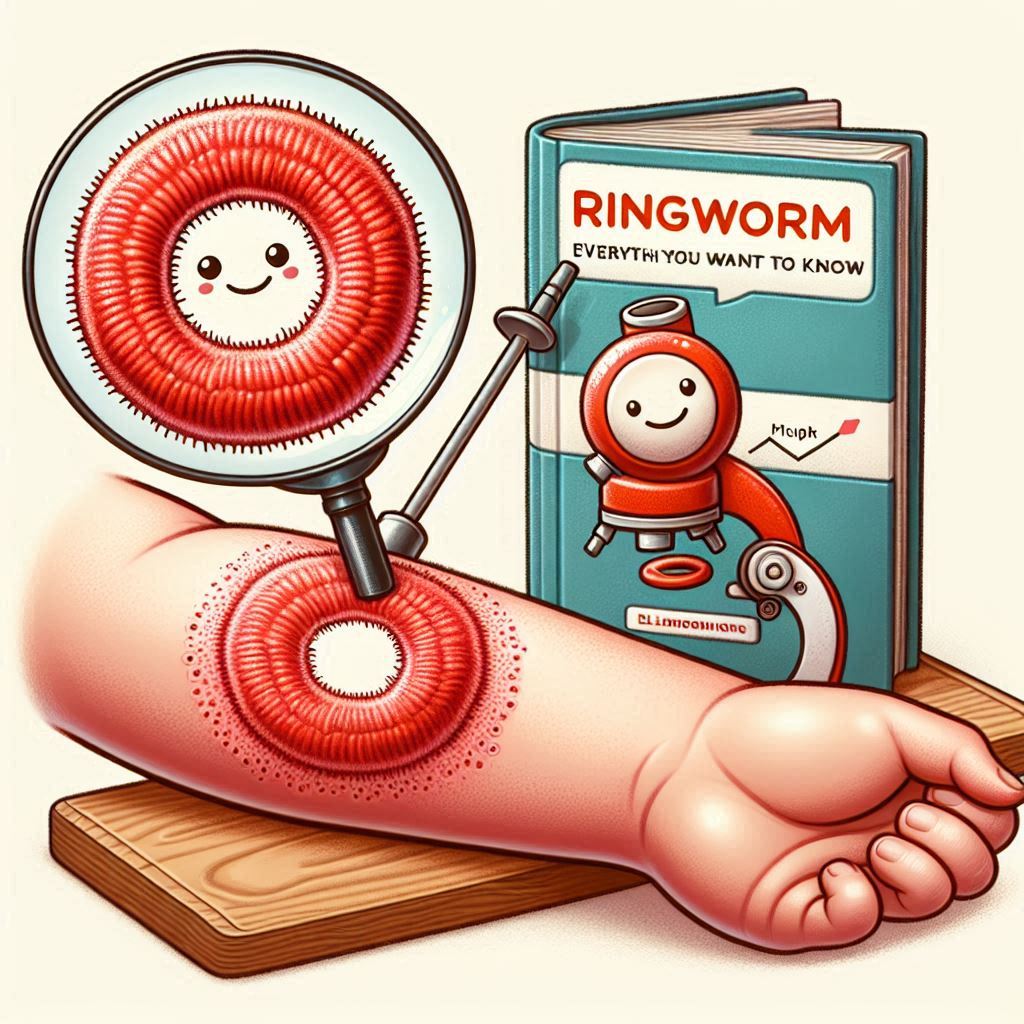Understanding Ringworm: Everything You Want to Know

Often surrounded by misconceptions, ringworm is a common fungal infection that deserves understanding. Despite its name, it has nothing to do with actual worms but presents a unique set of challenges to those affected.
Embarking on an exploration of everything you want to know about ringworm, we delve into symptoms, causes, treatments, and measures to prevent this contagious condition from affecting your skin and peace of mind.
- What is ringworm and how does it affect the skin?
- What are the symptoms of ringworm?
- How is ringworm diagnosed by medical professionals?
- What are the main causes of ringworm infections?
- What types of treatments are available for ringworm?
- How can you prevent the spread of ringworm?
- When should you see a doctor for ringworm symptoms?
- Further Insights on Ringworm Challenges and Care
What is ringworm and how does it affect the skin?
Ringworm, scientifically termed as tinea, targets the skin with itchy, ring-shaped rashes. This contagious skin infection can affect various body parts, leading to tinea corporis on the body, tinea capitis on the scalp, or even tinea pedis, commonly known as athlete's foot.
The infection thrives in warm, moist conditions, making it a frequent visitor in communal showers and locker rooms. It can disfigure the skin, causing redness and potentially leading to more severe complications if left untreated.
Understanding ringworm involves recognizing its love for keratin, a protein found abundantly in our hair, nails, and skin, which the fungus feeds on, causing the telltale signs of the condition.
What are the symptoms of ringworm?
Knowing what to look for can help in early detection. Ringworm stages pictures show the progression from small patches to larger, more defined rings. Symptoms include:
- Itchy, red circular rash with healthy-looking skin in the middle
- Scaling or cracking of the skin
- Blister-like lesions that may ooze
These symptoms can vary depending on the location of the infection on the body. For instance, tinea capitis on the scalp can lead to hair loss, while tinea pedis can cause thickened, discolored toenails.
How is ringworm diagnosed by medical professionals?
Diagnosis usually begins with a physical examination. Medical professionals may use a black light to identify the fluorescence caused by some ringworm strains. In some cases, a skin biopsy or KOH test may be conducted to confirm the fungal infection.
It's imperative to seek professional advice as conditions like eczema can mimic ringworm, leading to misdiagnosis and inappropriate treatments.
What are the main causes of ringworm infections?
Understanding the culprits behind ringworm is key to prevention. Direct skin-to-skin contact with an infected person or pet can transmit the fungus. Additionally, contact with objects like towels, clothing, or surfaces that have touched the fungus can also be a pathway for infection.
Warm, damp environments like those found in gyms are breeding grounds for tinea. Personal susceptibility, such as weakened immune systems, can also influence the likelihood of developing ringworm.
What types of treatments are available for ringworm?
Treating ringworm effectively involves using antifungal medications. These come in various forms:
- Topical creams for mild cases
- Oral medications for more severe or widespread infections
- Medicated shampoos for scalp ringworm
It's crucial to complete the full course of treatment to prevent recurrence, and to treat all affected areas simultaneously to prevent the infection from cycling back.
How can you prevent the spread of ringworm?
Prevention is straightforward but requires diligence. Preventive measures include:
- Maintaining good personal hygiene
- Keeping skin dry and clean
- Avoiding sharing personal items like combs or clothes
- Wearing footwear in communal areas
It's also wise to shower after contact with pets, as they can carry the fungus without showing symptoms.
When should you see a doctor for ringworm symptoms?
If over-the-counter treatments don't show improvement within a couple of weeks, it's time to consult a doctor. Also, seek medical attention if the infection is on the scalp or if you have existing health concerns that might be complicated by ringworm.
Any signs of a secondary bacterial infection, such as increased redness, swelling, or pus, also warrant a trip to the doctor.
Further Insights on Ringworm Challenges and Care
What are 3 interesting facts about ringworm?
Ringworm is not a worm; it's a misnomer stemming from the infection's circular appearance. Another intriguing fact is that ringworm can live on surfaces and objects for extended periods, making disinfection crucial. Lastly, animals can be asymptomatic carriers, often making pet owners unsuspecting victims of the infection.
What's the number one cause of ringworm?
The primary cause of ringworm is fungal spores that are transmitted through direct contact with an infected person, animal, object, or soil containing these spores.
How to get rid of ringworm permanently?
To eradicate ringworm, consistent treatment with antifungal medication is essential, along with strict hygiene practices to avoid re-infection.
What's the worst that can happen from ringworm?
While not life-threatening, ringworm can lead to complications like secondary bacterial infections, especially in individuals with weakened immune systems or untreated cases.
As we consider the hurdles posed by ringworm, let's take a look at a visual representation that outlines the steps to tackle this infection effectively:
In conclusion, while ringworm can be an unpleasant experience, understanding its nature and responding with appropriate care can lead to swift recovery and prevention of future outbreaks. Stay informed, stay vigilant, and maintain good hygiene to keep your skin healthy and free from fungal foes.

Leave a Reply